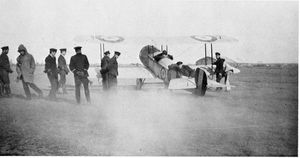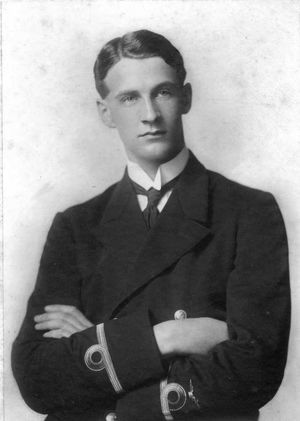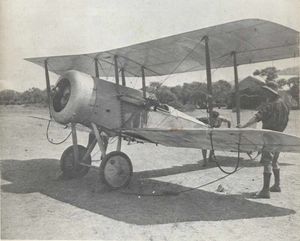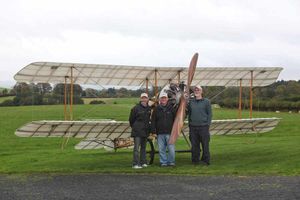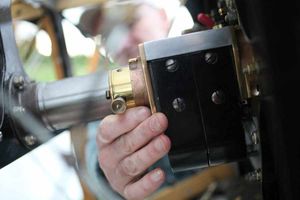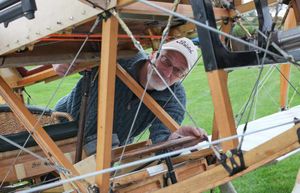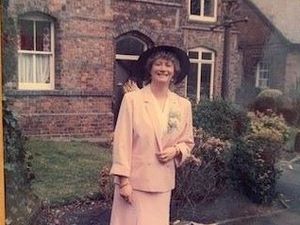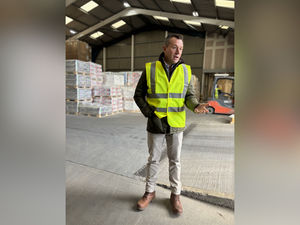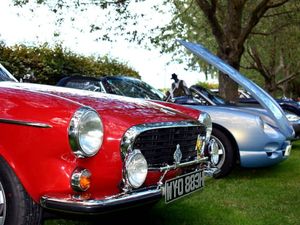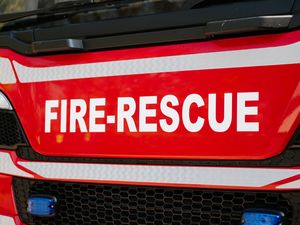Those magnificent men in grandad's machine
Two brothers have spent 12 years painstakingly rebuilding a plane flown by their grandfather during World War One - after finding parts of the aircraft in his garden shed.
David and Rick Bremner travelled the globe finding parts to reconstruct the historic war plane once piloted by their hero grandad Francis Donald Holden Bremner.
The pair have splashed out over £100,000 on their labour of love since they found three small parts of the Bristol Scout plane in his shed following his death in 1983.
Fl Sub Lt "Bunnie" Bremner had flown the plane between 1914 and 1918 while serving with the Royal Naval Air Service during the Gallipoli campaign.
On his return from battle the war hero had always told his family he would like to see the aircraft take to the skies once again.
So David, 63, and Rick, 61, along with pal Theo Willford, 66, set about honouring their late grandfather's wish in 2002.
Starting with just a joystick, rudder bar and magneto found in the shed the trio have since spent a staggering 10,000 hours building the plane from scratch.
As many of the parts were no longer in existence they had to scour the globe looking for components - including the engine- which was purchased in New Zealand.
And this week they were celebrating completing the remaining touches to the Bristol Scout Type-C plane - which has a wingspan of 24ft (7m) and is 20ft (6m) in length.
The aircraft is due to take the skies in spring next year and the trio plan to fly it over the River Somme on July 1, 2016 in a fitting tribute.
It will mark exactly 100 years since the fateful day in 1916 when almost 20,000 British soldiers lost their lives in France.
Yesterday (Fri) David, who works as a mechanical engineer and is chairman of the British Microlight Aircraft Association, said he believed his grandad would be proud.
The grandfather-of-two said: "We grew up less than 10 miles from my grandfather in Kent so we heard all his war stories.
"Although he talked about flying a lot he had never mentioned keeping these parts before.
"When we found them we knew they belonged to his favourite plane because the magneto was made by Bosch, the German company.
"Back in those days it was very hard to get German parts obviously, but my grandfather had told us the story of how he traded a few bombs and some food to a French base in return for the Bosch magneto.
"So these parts came from that plane and it would make sense that he would keep hold of them because it was his favourite aircraft he had flown.
"He said one day he would like to see it fly again over British skies."
These three pieces of the plane were discovered when David and his father, Ian, 91, were clearing Donald's workshop out, after his death in 1983.
They quickly realised they had found the part which provides a spark for the engine, from the pilot's beloved No.1264 aircraft.
But it was not until Theo, a fellow amateur pilot, encouraged the family to start rebuilding the plane that the project came about.
In 2002, David, Rick, and Theo began researching where they could find appropriate parts to start rebuilding the plane before work began in 2010.
It will be the only flyable Bristol Scout Type-C anywhere in the world when it finally takes off.
David, from Milson, in south Shropshire, added: "We had the parts for years and had the idea in the back of our minds that one day we would try to rebuild the plane.
"But it was Theo who actually got us to make a start.
"We started researching what the plane would look like and because the parts don't exist anymore we had to plan what replacements we could still get now.
"The three original bits we had only probably made up about two per cent of the whole thing, so there was so much left to do.
"The only thing we didn't make ourselves was the engine, which we got from a New Zealand-based company and it's is an actual 1917 engine in a beautiful condition.
"The aircraft is pretty much finished now apart from the petrol tank and the fabric covering the fuselage.
"Rick and I live in Shropshire but Theo lives in Dorset, so we took small things down to him and then brought them back in a trailer when he was working on it.
"I think our grandfather would be proud of us re-building his favourite plane, but he'd probably say we've spent far too much time and money on it as well."
Sub-lieutenant Holden, nicknamed "Bunnie" because he was always twitching his nose, was in active service throughout the whole of the First World War.
After the war Francis worked as a patents engineer in Brasted, Kent and lived with his wife Vivyen, and two sons, Christopher, and Ian – the father of Rick and David.
During 1916, Officer Holden had been stationed on the islands of Imbros and Thasos in the Aegean Sea as part of the Royal Naval Air Service, and flew seven Bristol Scout Type-C planes.
His favourite plane of the seven had Serial No. 1264 and he kept three small parts of that aircraft in his workshop until he died aged 89.
Builder Rick, a father-of-two from Tenbury Wells, Worcs, added: "It's been a huge privilege to be part of this project. It's just fantastic.
"We all just wish my grandfather was here to answer a lot of questions we have about details of the plane, because he could have told us straight away.
"We have old photos of what the plane should look like, but when you try to zoom in to look a specific details, it's too grainy to make out.
"But fortunately we got there in the end - its been a long old labour of love but it's been worth it.
"I think its a fitting tribute to my grandad and other British pilots who battled so valiantly for us during the Great War."
The Bristol Scout Type C aircraft was first ordered by the British government on November 5, 1914, in a 12 aircraft production batch for the Royal Flying Corps.
In was later commissioned by the competing Royal Naval Air Service (RNAS) in a 24-aircraft batch.
